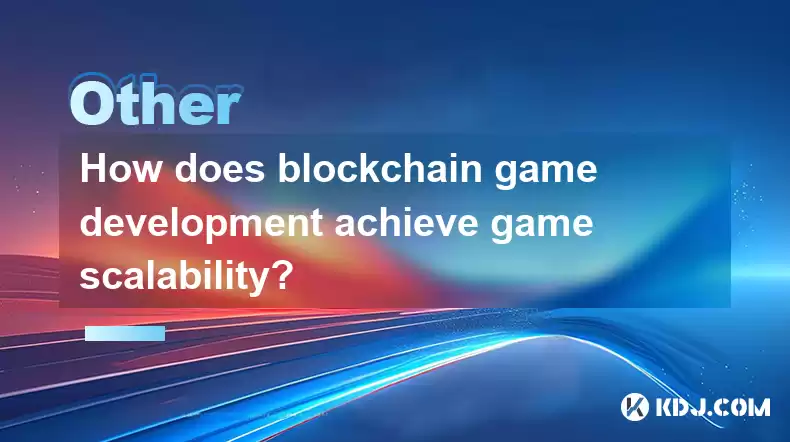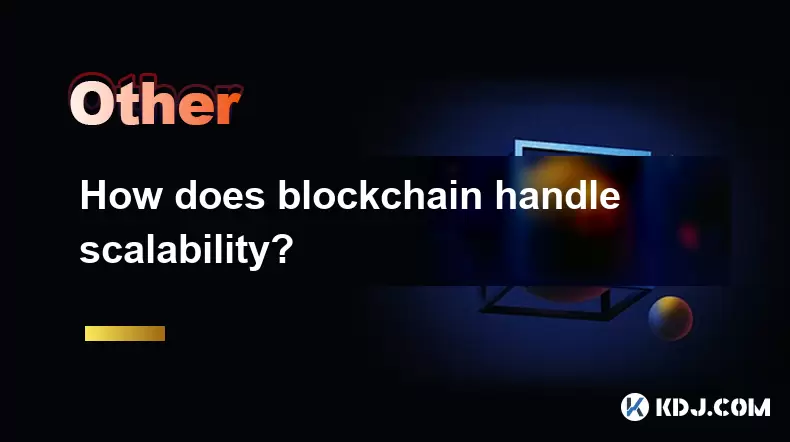-
 Bitcoin
Bitcoin $113600
-0.05% -
 Ethereum
Ethereum $3457
-1.05% -
 XRP
XRP $2.860
-4.17% -
 Tether USDt
Tether USDt $0.9998
-0.02% -
 BNB
BNB $747.3
-1.03% -
 Solana
Solana $161.0
-1.78% -
 USDC
USDC $0.9998
-0.03% -
 TRON
TRON $0.3259
-0.19% -
 Dogecoin
Dogecoin $0.1959
-1.69% -
 Cardano
Cardano $0.7227
0.85% -
 Hyperliquid
Hyperliquid $38.34
-0.83% -
 Sui
Sui $3.435
-0.88% -
 Stellar
Stellar $0.3796
-1.29% -
 Chainlink
Chainlink $16.02
0.16% -
 Bitcoin Cash
Bitcoin Cash $540.5
0.48% -
 Hedera
Hedera $0.2406
1.01% -
 Ethena USDe
Ethena USDe $1.001
0.03% -
 Avalanche
Avalanche $21.19
-1.37% -
 Toncoin
Toncoin $3.625
0.71% -
 UNUS SED LEO
UNUS SED LEO $8.962
0.03% -
 Litecoin
Litecoin $108.1
0.88% -
 Shiba Inu
Shiba Inu $0.00001207
-0.48% -
 Polkadot
Polkadot $3.576
0.66% -
 Uniswap
Uniswap $9.049
0.64% -
 Monero
Monero $298.9
0.81% -
 Dai
Dai $0.0000
0.00% -
 Bitget Token
Bitget Token $4.285
-0.11% -
 Pepe
Pepe $0.00001034
-1.16% -
 Cronos
Cronos $0.1302
-1.26% -
 Aave
Aave $257.5
1.46%
How does blockchain game development achieve game scalability?
Blockchain games use Layer 2 solutions like sidechains and state channels, sharding, and smart contract optimization to enhance scalability and handle more players efficiently.
Apr 15, 2025 at 03:28 pm

Introduction to Blockchain Game Scalability
Blockchain game development faces unique challenges when it comes to achieving scalability. Scalability in the context of blockchain games refers to the ability of the game to handle an increasing number of users and transactions without compromising performance. This is crucial for the success and sustainability of any blockchain-based game. In this article, we will explore the various strategies and technologies that developers use to enhance the scalability of blockchain games.
Understanding the Challenges of Scalability in Blockchain Games
The primary challenge in achieving scalability in blockchain games stems from the inherent limitations of blockchain technology. Traditional blockchains, like Bitcoin and Ethereum, have limited transaction processing capabilities due to their consensus mechanisms and block sizes. For instance, Ethereum's network can process around 15 transactions per second, which is significantly lower than what is required for a large-scale game. This limitation can lead to high transaction fees and slow processing times, which can deter players and hinder the game's growth.
Layer 2 Solutions for Enhanced Scalability
To address these challenges, developers often turn to Layer 2 solutions. These are protocols built on top of the main blockchain (Layer 1) that help to offload transactions and computations, thereby improving scalability. Some popular Layer 2 solutions include:
Sidechains: These are separate blockchains that run parallel to the main blockchain. They allow for faster transaction processing and can be customized to suit the specific needs of a game. For example, a game could use a sidechain to handle in-game transactions while still maintaining a connection to the main blockchain for security and interoperability.
State Channels: These allow players to conduct multiple transactions off-chain and then settle the final state on the main blockchain. This significantly reduces the load on the main network and speeds up transaction times. For instance, in a game, players could engage in multiple rounds of a game off-chain and only submit the final outcome to the blockchain.
Plasma: This is a framework that enables the creation of child blockchains (Plasma chains) that are anchored to the main blockchain. These child chains can process transactions independently, which helps to scale the game's capacity. A game could use Plasma chains to manage different aspects of the game, such as asset transfers or game state updates.
Sharding: Dividing the Network for Better Performance
Another approach to achieving scalability in blockchain games is sharding. Sharding involves dividing the blockchain network into smaller, more manageable pieces called shards. Each shard can process its own set of transactions and smart contracts, which significantly increases the overall throughput of the network. For example, a game could use sharding to distribute the load of player interactions across multiple shards, ensuring that the game remains responsive even as the player base grows.
Optimizing Smart Contracts for Efficiency
Smart contracts are a crucial component of blockchain games, as they automate various game mechanics and transactions. However, poorly optimized smart contracts can lead to high gas costs and slow execution times, which can impact scalability. To address this, developers can employ several strategies:
Code Optimization: By writing more efficient code, developers can reduce the computational resources required to execute smart contracts. This can be achieved through techniques such as minimizing loops, using more efficient data structures, and reducing the number of storage operations.
Gas Optimization: Since gas costs are a significant factor in Ethereum-based games, developers can optimize their smart contracts to use less gas. This can be done by reducing the number of operations, using more gas-efficient opcodes, and leveraging gas refunds where possible.
Off-Chain Computation: Some computations can be performed off-chain and then verified on-chain, which can significantly reduce the load on the blockchain. For example, a game could use zero-knowledge proofs to verify off-chain computations without revealing the underlying data.
Utilizing Interoperability for Scalability
Interoperability between different blockchains can also play a crucial role in enhancing the scalability of blockchain games. By allowing assets and data to move seamlessly between different blockchains, developers can leverage the strengths of multiple networks to improve the overall performance of their game. For instance, a game could use a fast, scalable blockchain for in-game transactions and a more secure blockchain for asset storage and verification.
Case Studies: Successful Scalability Implementations in Blockchain Games
Several blockchain games have successfully implemented scalability solutions to handle large player bases and complex game mechanics. Here are a few notable examples:
Axie Infinity: This popular game uses a combination of sidechains and off-chain computation to manage its high transaction volume. By processing most transactions on a sidechain and only settling the final state on the Ethereum mainnet, Axie Infinity has been able to maintain a smooth gaming experience for its players.
Gods Unchained: This card game leverages Layer 2 solutions to enhance its scalability. By using state channels, players can engage in multiple matches off-chain and only submit the final outcome to the blockchain, which significantly reduces the load on the network.
Decentraland: This virtual world game uses sharding to distribute the load of player interactions across multiple shards. This allows Decentraland to handle a large number of concurrent users without compromising performance.
Frequently Asked Questions
Q: How do Layer 2 solutions impact the security of blockchain games?
A: Layer 2 solutions can enhance the scalability of blockchain games, but they may also introduce new security considerations. While the main blockchain provides a high level of security, Layer 2 solutions rely on additional protocols and mechanisms to ensure the integrity of off-chain transactions. Developers must carefully design and implement these solutions to maintain the security of the game.
Q: Can blockchain games achieve the same level of scalability as traditional games?
A: While blockchain games face unique challenges in achieving scalability, they can leverage various technologies and strategies to approach the scalability levels of traditional games. By using Layer 2 solutions, sharding, and optimizing smart contracts, developers can significantly improve the performance of their games and handle large player bases.
Q: What role does the choice of blockchain play in the scalability of a game?
A: The choice of blockchain can have a significant impact on the scalability of a game. Different blockchains have varying levels of transaction processing capabilities and consensus mechanisms. For instance, Ethereum is widely used for blockchain games but has scalability limitations. Developers may choose to use more scalable blockchains like Binance Smart Chain or Polkadot to enhance the performance of their games.
Q: How can players benefit from improved scalability in blockchain games?
A: Improved scalability in blockchain games can lead to faster transaction times, lower fees, and a more seamless gaming experience for players. With better scalability, games can handle more players and complex interactions, which can enhance the overall enjoyment and engagement of the game.
Disclaimer:info@kdj.com
The information provided is not trading advice. kdj.com does not assume any responsibility for any investments made based on the information provided in this article. Cryptocurrencies are highly volatile and it is highly recommended that you invest with caution after thorough research!
If you believe that the content used on this website infringes your copyright, please contact us immediately (info@kdj.com) and we will delete it promptly.
- SOLF Token vs. BONK: Predicting a $300 Solana in 2025?
- 2025-08-03 16:30:16
- Sei, Injective, and Bitcoin Dominance: Navigating the Crypto Landscape
- 2025-08-03 16:50:15
- UK Lifts Ban on Crypto ETNs: Bitcoin Set for Retail Boom?
- 2025-08-03 16:30:16
- Coin Master Free Spins: Maximize Your Game with Daily Links (August 2025)
- 2025-08-03 16:50:15
- Bitcoin Liquidity, Osmosis Zone, and Investor Interest: A Deep Dive
- 2025-08-03 15:16:44
- Web3, Sports, and Computing Power: A New Ballgame
- 2025-08-03 15:16:44
Related knowledge

What is the difference between on-chain and off-chain transactions?
Aug 02,2025 at 04:22pm
Understanding On-Chain TransactionsOn-chain transactions refer to digital asset transfers that are recorded directly on a blockchain ledger. These tra...

What is a node's role in a blockchain network?
Aug 03,2025 at 03:16pm
Understanding the Function of a Node in a Blockchain NetworkA node is a fundamental component of any blockchain network, acting as a participant that ...

What is the double-spending problem and how does blockchain prevent it?
Aug 02,2025 at 01:07pm
Understanding the Double-Spending ProblemThe double-spending problem is a fundamental challenge in digital currency systems where the same digital tok...

What is the difference between a blockchain and a database?
Aug 01,2025 at 09:36pm
Understanding the Core Structure of a BlockchainA blockchain is a decentralized digital ledger that records data in a series of immutable blocks linke...

How does blockchain handle scalability?
Aug 02,2025 at 02:58pm
Understanding Blockchain Scalability ChallengesBlockchain scalability refers to a network's ability to handle an increasing volume of transactions wit...

What is the role of cryptography in blockchain?
Aug 03,2025 at 03:42pm
Understanding the Foundation of Blockchain SecurityCryptography is the cornerstone of blockchain technology, providing the essential tools to ensure d...

What is the difference between on-chain and off-chain transactions?
Aug 02,2025 at 04:22pm
Understanding On-Chain TransactionsOn-chain transactions refer to digital asset transfers that are recorded directly on a blockchain ledger. These tra...

What is a node's role in a blockchain network?
Aug 03,2025 at 03:16pm
Understanding the Function of a Node in a Blockchain NetworkA node is a fundamental component of any blockchain network, acting as a participant that ...

What is the double-spending problem and how does blockchain prevent it?
Aug 02,2025 at 01:07pm
Understanding the Double-Spending ProblemThe double-spending problem is a fundamental challenge in digital currency systems where the same digital tok...

What is the difference between a blockchain and a database?
Aug 01,2025 at 09:36pm
Understanding the Core Structure of a BlockchainA blockchain is a decentralized digital ledger that records data in a series of immutable blocks linke...

How does blockchain handle scalability?
Aug 02,2025 at 02:58pm
Understanding Blockchain Scalability ChallengesBlockchain scalability refers to a network's ability to handle an increasing volume of transactions wit...

What is the role of cryptography in blockchain?
Aug 03,2025 at 03:42pm
Understanding the Foundation of Blockchain SecurityCryptography is the cornerstone of blockchain technology, providing the essential tools to ensure d...
See all articles

























































































